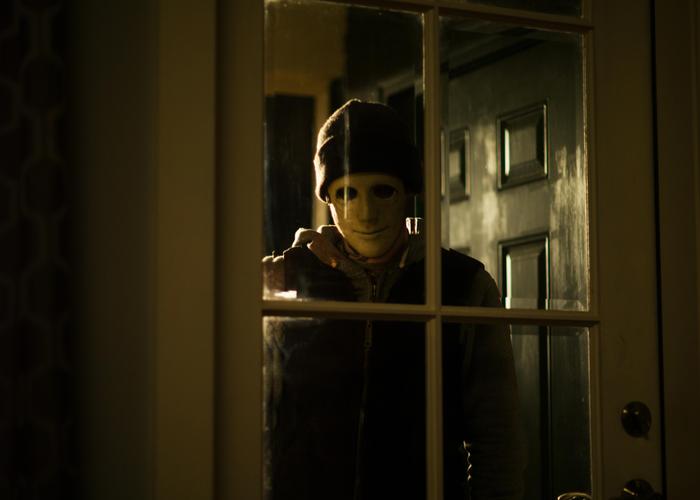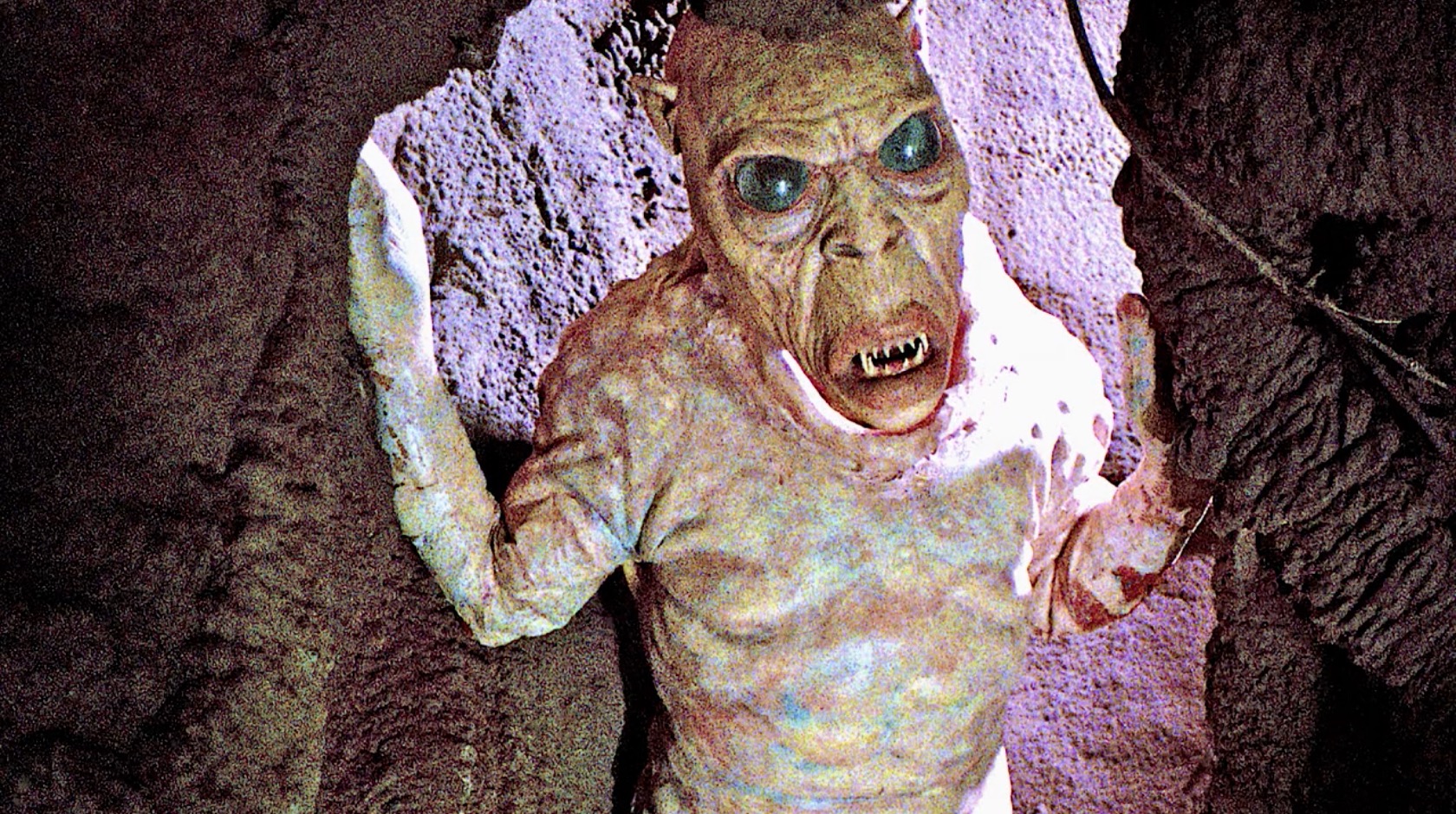Home Video
[SXSW Review] ‘Hush’ Shows How Silence Is Most Frightening Tool Of All

With only about fifteen minutes of dialogue spoken throughout the entire course of the film, Hush is practically a modern day silent movie. As the plot revolves around Maddie Young, a popular fiction novelist who happens to be both deaf and mute, most of the story is told through particular body movements and sign language. Set up like a sort of siege film between the two main characters, with a handicapped female lead fighting off a predator who torments her at her home deep in the woods, Hush feels like an innovative mash-up of Straw Dogs, Funny Games, and Wait Until Dark.
Long before her masked marauder shows up on her doorstep with a bow and arrow in tow, Maddie spends the evening in her living room battling herself, as she struggles to write the ending to her newest book. The trouble isn’t her imagination, but her indecisiveness, as she bounces back and forth between the seven different possible endings playing out in her head, before ultimately throwing up her hands in defeat. However, once her attacker begins dueling out his wicked assortment of torture and horrifying games, Maddie will find that she has no choice but to begin making decisions if she wants to live through the night.
When we, the viewers, are first introduced to Maddie, we can’t help but feel somewhat sorry for her, as she struggles to communicate with her neighbor Sarah, and shies away from all human connection in her little cabin in the woods. Her sister tells her over FaceTime chat that she worries about Maddie being so isolated from the world, but says she understands why she would choose to retreat from others. Maddie quickly corrects her and explains that because of an incident that occurred when she was a teenager, she was ostracized from the world, not the other way around. It’s easier for Maddie to live peacefully in the quiet forest as opposed to the loud banging and ever-constant vibrations of the city she used to inhabit.
Not only does this introduction to the lead character put the viewer in Maddie’s shoes and shows how the deaf are forced to adjust to daily life without the sensation of sound, but it also convinces the viewer from the start that Maddie will probably lose this fight against the man who is targeting her, simply because she is already at a disadvantage. Because of this knowledge, every moment during their face off becomes that much more intense, and each little skirmish that Maddie wins that much more surprising.
Adding an even thicker coat to the already taut atmosphere is the lack of dialogue. It’s not just that Maddie can’t cry out for help, which makes her easier prey, but the fact that the viewer is almost never allowed a moments release because the tension is never exerted through any utterances. It’s only natural for humans to speak often, especially when a person is stressed or scared, and since Maddie can’t, it only adds to the nail-biting, heightened aura of the film. In a genre where shrill screams, loud chainsaws and painful sobs usually dictate the scares, Hush provides a pulse-pounding example of how silence can be the most frightening tool of all.
The only real aspect that might be worth griping about in the movie is the unnecessary pandering that happens towards the end. It’s always nice when a storyteller assumes that their audience is just as intelligent as he or she, so although the ending is a very clever analogy for tackling writer’s block and evolving as a person, it’s also pretty spelled out, just to make sure anyone that’s not caught up gets the full picture. It would’ve been a tad more interesting to see this analogy played as subtext, but it’s not so bothersome that it completely takes away much from the overarching message.
Overall, Hush is a well made film that puts a new twist on an already familiar sub-genre, and shows not only that Mike Flanagan is currently one of horror’s most talented directors (especially with Oculus already under his belt), but also provides the argument that horror should be taken more seriously by most movie-goers. Hush portrays how horror can be classy, and it can be executed in a professional manner that’s watchable for all cinephiles, even if they’re not particularly inclined to sit down to view a thriller. This little film is definitely worth seeking out when it hits Netflix — just to be sure to watch it in a dark and very quiet room.

Home Video
Gateway Horror Classic ‘The Gate’ Returns to Life With Blu-ray SteelBook in May

One of my personal favorite horror movies of all time, 1987’s gateway horror classic The Gate is opening back up on May 14 with a brand new Blu-ray SteelBook release from Lionsgate!
The new release will feature fresh SteelBook artwork from Vance Kelly, seen below.
Special Features, all of which were previously released, include…
- Audio Commentaries
- Director Tibor Takacs, Writer Michael Nankin, and Special Effects Designer & Supervisor Randall William Cook
- Special Effects Designer & Supervisor Randall William Cook, Special Make-Up Effects Artist Craig Reardon, Special Effects Artist Frank Carere, and Matte Photographer Bill Taylor
- Isolated Score Selections and Audio Interview
- Featurettes:
- The Gate: Unlocked
- Minion Maker
- From Hell It Came
- The Workman Speaks!
- Made in Canada
- From Hell: The Creatures & Demons of The Gate
- The Gatekeepers
- Vintage Featurette: Making of The Gate
- Teaser Trailer
- Theatrical Trailer
- TV Spot
- Storyboard Gallery
- Behind-the-Scenes Still Gallery
When best friends Glen (Stephen Dorff) and Terry (Louis Tripp) stumble across a mysterious crystalline rock in Glen’s backyard, they quickly dig up the newly sodden lawn searching for more precious stones. Instead, they unearth The Gate — an underground chamber of terrifying demonic evil. The teenagers soon understand what evil they’ve released as they are overcome with an assortment of horrific experiences. With fiendish followers invading suburbia, it’s now up to the kids to discover the secret that can lock The Gate forever . . . if it’s not too late.
If you’ve never seen The Gate, it’s now streaming on Prime Video and Tubi.














You must be logged in to post a comment.